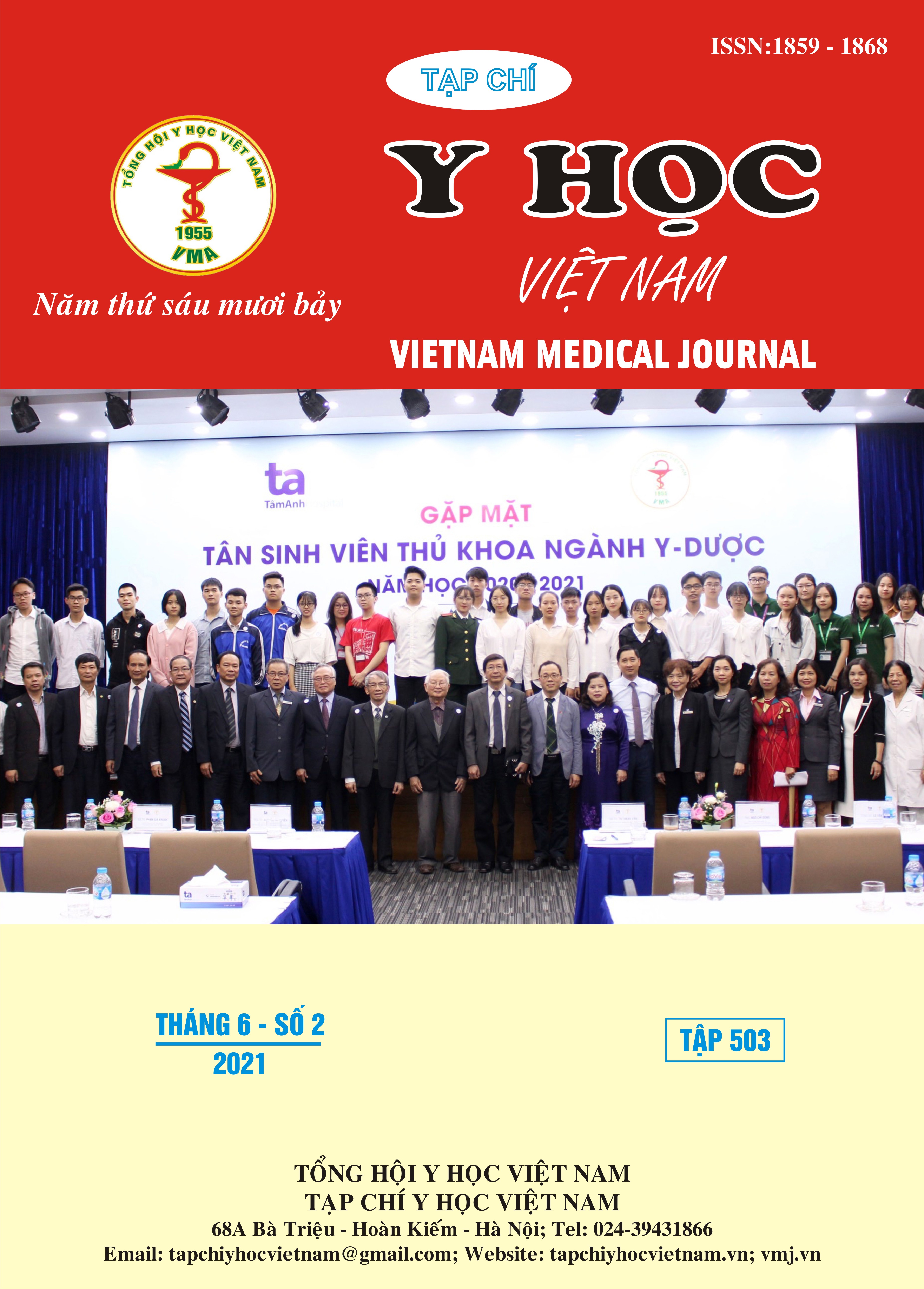OUTCOMES OF CEREBRAL HEMISPHERE TUMOR SURGERY USING NEURONAVIGATION
Main Article Content
Abstract
Objectives: to assess the outcomes of cerebral hemisphere tumor surgery using Neuronavigation. Methods: A descriptive cross-sectional study on surgical outcomes of 72 patients suffering cerebral hemisphere tumors operated with the assistance of Neuronavigation in surgery at Viet Duc hospital from October 2015 to March 2016. Results: 72 patients having cerebral hemisphere tumors included 27 males (37.5%), 45 females (62.5%); The median age was 48.6 ± 13.4. Pathology: 38 meningiomas; 28 gliomas; 5 metastatic brain tumors; The extent of tumor resection: 76.4% gross total resection, 18.1% almost total resection and protecting important structures. The average surgical time was 163.47±84.64 minutes; The average time for postoperative treatment was 7.06 ± 2.19 days; 93% of patients did not require blood transfusion; 12.5% had postoperative complications; Outcome at 3 months post-operative period: Good (55.6%), mild sequelae (31.9%) and 87.5% of patients had improved quality of life after surgery (Karnofsky scale: I, II). Conclusion: The application of Neuronavigation in brain tumor surgery helps the surgeon confidently remove the brain tumor to the maximum extent, preserving the functional areas, giving patients the improvement in quality of life.
Article Details
Keywords
Neuronavigation, cerebral hemisphere tumors
References
2. T.Y. Jung et al (2006). Application of Neuronavigation System to Brain Tumor Surger y with Clinical Experience of 420 Cases. Minim Invas Neurosurg 2006; 49: 210–215.
3. R. J. Benveniste, I. M. Germano (2005). Correlation of factors predicting intraoperative brain shift with successful resection of malignant brain tumors using image-guided techniques. Surgical Neurology 63 (2005) 542–549.
4. Gene H. Barnett (1995). Intracranial Meningioma Resection Using Frameless Stereotaxy. Journal of Image Guided Surgery 1:105-52 (1995).
5. Paleologos TS et al (2000). Clinical utility and cost-effectiveness of interactive image-guided craniotomy: Clinical comparison between conventional and image-guided meningioma surgery. Neurosurgery 2000 Jul; 47(1):40-7.
6. Ayhan ONK et al (2003). Treatment of deep-seated cerebral lesions by stereotactic craniotomy. Gazi Medical Journal 2003; 14: 23-28.
7. Kiều Đình Hùng (2010). Ứng dụng navigation (hệ thống định vị) trong phẫu thuật u não tại bệnh viện Đại học Y Hà Nội. Tạp chí Nghiên cứu Y học 2010, phụ trương 67 (2), tr 8 – 12.
8. Chu Tân Sĩ (2012). Nhận xét kết quả phẫu thuật u não tại Bệnh viện nhân dân 115. Y học TP. Hồ Chí Minh 2012, tập 16 – số 1.


